Since time immemorial, rodents and humans have lived side by side. It is said that rodents started encroaching on human turf since the very starting of their time. It has just increased over the hundreds of years and has reached to such an extent that now for food they even pillage our agricultural fields.
It is said that Agriculture is the heart and soul of the nation. It gives riches to the nation and also the ever loving economy. The only revenue which a nation can call its own is the revenue generated by agricultural sectors. In today’s time and date when malnutrition and food shortage is rampant, agriculture becomes even more important.
But even this sector has enemies. They come in the form of animals, rodents, insects, and termites that destroy the crops grown on the land. They either destroy the crops by eating them or eating the stem and saplings when the plant is in a very early stage. This destruction is totally not acceptable. This has to be prevented.
Let’s have a look at the following article regarding the economic loss caused by rodents in the agricultural industry.
Rodent damage costing the agriculture industry millions
Mar. 14, 2011, Gail Keirn, APHIS Public Affairs Specialist, USDA
Rodents cause millions of dollars in damages to field crops, stored grain and farm equipment each year. In addition, they are the major carrier for more than 60 diseases that are transmissible to humans, companion animals, and livestock.
In the new book titled, “Agricultural Production,” by Nova Science Publishers, Inc., Felix C. Wager (editor), researchers from the USDA and the International Rice Research Institute (IRRI) presents a review of the latest information on rodent damage management as it relates to worldwide agricultural production.
“Rodents pose one of the most serious threats to food production worldwide, but indiscriminately removing rodents from ecosystems is not always the best management option,” states Dr. Gary Witmer, lead author and research wildlife biologist at the USDA-APHIS National Wildlife Research Center. “Sustainable agriculture attempts to ensure the profitability of farms while preserving and protecting the environment upon which they depend.”
Traditional approaches to rodent population and damage management have relied on direct reduction of populations using rodenticide baits or rodent traps and modifying the habitat to be less suitable for rodents. Recently, the use of an ecologically-based rodent management system (EBRM) that is tailored to the rodent species, agricultural system, and local habitat is gaining more support from researchers and agricultural specialists.
“The key to the EBRM is to reduce important resources needed by rodents, such as food and nesting sites at critical times of the year through habitat modification,” notes co-author Dr. Grant Singleton from the IRRI. “The emphasis is on a lower reliance on rodenticides and more community-wide habitat management approaches.”
Witmer and Singleton note the EBRM approach may still involve the use of lethal methods, such as rodenticides, and research is critical to finding new rodenticides as well as make existing rodenticides more effective and less hazardous to non-target animals and the environment.
Rodents pose one of the most serious threats to food production worldwide, but indiscriminately removing rodents from ecosystems is not always the best management option.
The best management option would be to keep the rodents away from the fields and crops without killing them. This best option is provided by C Tech Corporation. We provide an extremely low toxicity and extremely low hazard alternative to this major problem which is often neglected.
Rodrepel®™ and Termirepel®™ are two products which are one of its kinds. They are an extremely low toxicity and extremely low hazard and eco-friendly products. It is especially effective when it is incorporated into films which are used to cover the fields to keep the animals and rodents at bay.
RodrepelTM is available in three forms namely masterbatch, liquid concentrate, and lacquer.
Masterbatch can be incorporated into polymeric applications like fencing, water pipes, agricultural films, polymeric tree guards, wires, cables, etc. This would result in the final application being rodent repellent.
Liquid concentrate can be mixed in paints in a pre-determined ratio and be applied to fences from farms, outhouse, etc. to repel rats from the area required.
Lacquer form can be directly applied to the already installed application such as wooden fences, polymeric tree guards, pipes, wires, cables, etc. The lacquer is compatible with most of the surfaces like metal, wood, concrete, polymer, ceramic etc.
The product is compliant with ROHS, ROHS2, ISO, REACH, APVMA, NEA, EU-BPR, and FIFRA exempted.
Hence by using RodrepelTM the farms, and gardens can be prevented from rat damage effectively and considerably.
Contact us at technical.marketing@ctechcorporation.com if you’re facing problems with rodents and get best remedies to combat the pest menace.
Also, visit our websites:
http://www.ctechcorporation.com/
http://www.rodrepel.com/
http://www.termirepel.com/
http://www.combirepel.com/
Follow our Facebook pages at:
1] https://www.facebook.com/Combirepel-411710912249274/
2] https://www.facebook.com/Termirepel-104225413091251/
3] https://www.facebook.com/Rodrepel-120734974768048/
Follow us on our Twitter pages at:
1] https://twitter.com/rodrepel
2] https://twitter.com/termirepel
3] https://twitter.com/combirepel

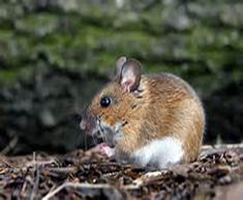 The number of hotels infested by rodents is increasing day by day. The adverse impacts of such invasions by these notorious pests not only affect the hotel owners but also the travelers. Hotels have been facing problems due to rodents since long, but the use of appropriate measures to get rid of them is rarely seen.
The number of hotels infested by rodents is increasing day by day. The adverse impacts of such invasions by these notorious pests not only affect the hotel owners but also the travelers. Hotels have been facing problems due to rodents since long, but the use of appropriate measures to get rid of them is rarely seen.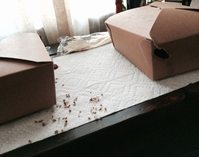 In hotels, specific problem areas include poorly sealed heating and air conditioning ducts.
In hotels, specific problem areas include poorly sealed heating and air conditioning ducts.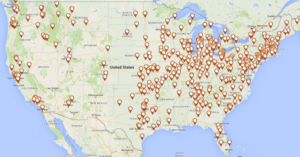
 There’s this rodent who is overtaking the wetlands. It’s just not dwelling in the wetlands but by its burrowing habits is causing a huge menace!
There’s this rodent who is overtaking the wetlands. It’s just not dwelling in the wetlands but by its burrowing habits is causing a huge menace!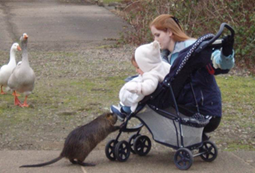 Nutria has long incisors that are yellow to orange or orange to red in color.
Nutria has long incisors that are yellow to orange or orange to red in color. Have you recently found shavings of wood, clothes going torn, cables losing their insulation or holes in your walls at home?
Have you recently found shavings of wood, clothes going torn, cables losing their insulation or holes in your walls at home?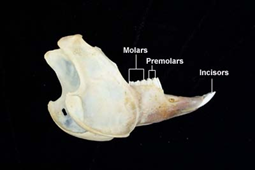 Most species have up to 22 teeth with no canines or anterior premolars. In rats, these are the four, long, sharp front teeth, two on top and two on the bottom. Rat incisors are highly specialized for gnawing. They are open-rooted, which means they grow throughout life. Rodents also have one or multiple pairs of premolars or molars (these teeth, also called cheek teeth, are located towards the back of the animal’s upper and lower jaws). Molars are the rearmost teeth in the mouth, used for grinding food prior to swallowing it. Molars are never replaced. Rats have only one set of teeth during their life. Rats particularly have 12 molars, six on the top and six on the bottom and three on each side of each jaw.
Most species have up to 22 teeth with no canines or anterior premolars. In rats, these are the four, long, sharp front teeth, two on top and two on the bottom. Rat incisors are highly specialized for gnawing. They are open-rooted, which means they grow throughout life. Rodents also have one or multiple pairs of premolars or molars (these teeth, also called cheek teeth, are located towards the back of the animal’s upper and lower jaws). Molars are the rearmost teeth in the mouth, used for grinding food prior to swallowing it. Molars are never replaced. Rats have only one set of teeth during their life. Rats particularly have 12 molars, six on the top and six on the bottom and three on each side of each jaw.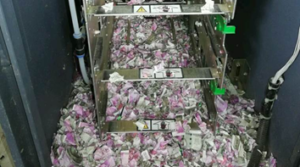
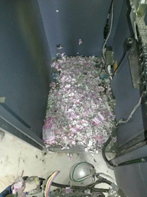
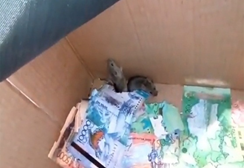 A pair of mice snuck into an ATM in the Kazakh capital Astana, hiding from a snow storm. Bank workers were surprised when they discovered the tiny intruders and the ruined notes they had munched on during their stay.
A pair of mice snuck into an ATM in the Kazakh capital Astana, hiding from a snow storm. Bank workers were surprised when they discovered the tiny intruders and the ruined notes they had munched on during their stay.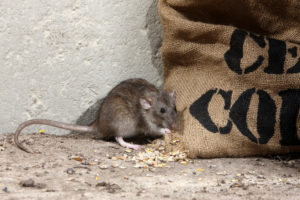 A country where starvation deaths and undernourished children fail to wake up the government from a deep slumber, a minute wastage of foodgrain is a crime. However, the awful condition in which the warehouses are maintained is a sign of why there is massive wastage of foodgrain in the country.
A country where starvation deaths and undernourished children fail to wake up the government from a deep slumber, a minute wastage of foodgrain is a crime. However, the awful condition in which the warehouses are maintained is a sign of why there is massive wastage of foodgrain in the country.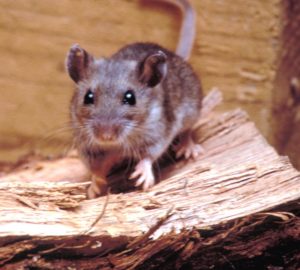 Excellent hearings, vision, smell and touch have enabled the house mouse to be highly adaptable to homes and indoor buildings. All they need is a 1/4″ opening to be able to enter a house, so they often have access to many places along the house’s perimeter.
Excellent hearings, vision, smell and touch have enabled the house mouse to be highly adaptable to homes and indoor buildings. All they need is a 1/4″ opening to be able to enter a house, so they often have access to many places along the house’s perimeter. House mice aren’t just a nuisance but a potential source of infections, say researchers who trapped and tested more than 400 of the rodents from apartments across New York City.
House mice aren’t just a nuisance but a potential source of infections, say researchers who trapped and tested more than 400 of the rodents from apartments across New York City.